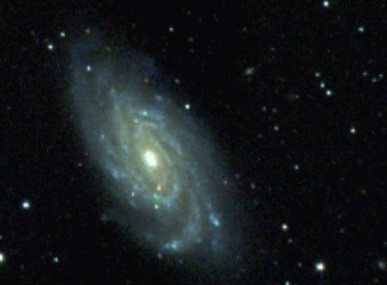Sloan Digital Sky Survey Extended to Second Run

This image of the galaxy NGC 6070, which is more than 100 million light years away, was taken during the Sloan Digital Sky Survey's first run.
Over the past five years, the Sloan Digital Sky Survey mapped one quarter of the nighttime sky, identifying more than 100 million stars, galaxies and quasars. Now, with additional funding from the NSF, the Alfred P. Sloan Foundation, and participating institutions, the survey will continue through mid-2008, expanding its horizons to study the expansion of the universe and the formation of galaxies.
"This fundamental science will allow us to continue testing cosmological models," said SDSS director Rich Kron, of Fermilab and the University of Chicago.
The extension, which officially began on July 1, has three purposes. The first is to continue mapping the skies to create an even larger, contiguous chart of the heavens. The survey's first run mapped over 7,000 square degrees of the sky in two oval-shaped regions; the second run will fill in the gap between these two areas, creating one large map.
In its second goal, the survey will scan the sky for supernovae to help measure dark energy. By tracking the brightness of supernovae over time, researchers will be able to accurately measure the rate at which the universe expands. Because this expansion is propelled by dark energy, the survey will help quantify the characteristics of dark energy in the universe.
The survey's third and final purpose is to measure the amount of dark matter in the Milky Way. Stars in the outer parts of our Milky Way are observed to travel faster than can be explained by the gravitational pull of other luminous stars alone, suggesting that dark matter also propels their movement. "Along with dark energy, this is the biggest challenge for astrophysics right now," said Fermilab scientist Brian Yanny. By measuring the speeds of these stars, the Sloan Extension for Galactic Understanding and Exploration (SEGUE) will attempt to quantify the amount and distribution of dark matter in our galaxy.
"These three goals make for a very ambitious project," said Steven Kent, the head of survey operations at Sloan and the head of Fermilab's Experimental Astrophysics Group. "We're taking not just one leap forward, but two."


